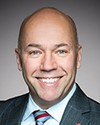I think you've touched on another important factor for suicide, which is that we know that kids, young people, are at lower risk of suicide if they have what we call forward thinking, so they can see themselves at some point in the future doing something. Whether that's being a mother, a father, a student, an employee, they have to be able to see themselves at least at some point in the future, and then we know they have something to hold on to.
The challenge that we face—and I'll be the first to admit that there is no easy set of solutions to this—is how to help and support indigenous young people across this country to develop a sense of identity for themselves that is consistent with their tradition, their culture, and their values, but also functional in contemporary times. Do you know what I mean?
For example, I am about to turn 52 years old. I'm a child of the sixties scoop, and I can honestly tell you that I did not feel strong in my identity until I was probably in my mid-twenties to mid-thirties. It took that long for me to feel comfortable in both, such that I could be a strong first nations woman and yet be a psychiatrist and function in a very difficult job and be who I am in my life, a wife, a mother, whatever.
That's the challenge, and I don't necessarily think there is an easy answer, but I think one way to go about it that I touched on briefly is to invest much more heavily in sharing stories of resilience with our young people. All of the resilience literature, whether it has to do with indigenous people or not, says that if somebody has at least one strong person in their life that they can relate to and they have a good relationship with, or they share a story with, that, in and of itself, can foster resiliency.
We need to hear stories like my own, and I don't mean that in an arrogant way at all. If you talk to indigenous people across the country who are recognized as achievers, no one will tell you a story that it was just smooth sailing, that they were just born and they went on to greatness without a hitch. That is not the case at all. I think everyone has a very complicated and rich story of struggle, and yet ultimate achievement. If we shared these types of stories with our young people, I think they could relate to pieces of themselves, see themselves in that, see possibilities for themselves in the future, and ultimately it would result in them flourishing as contributing, valuable members of Canadian society.


